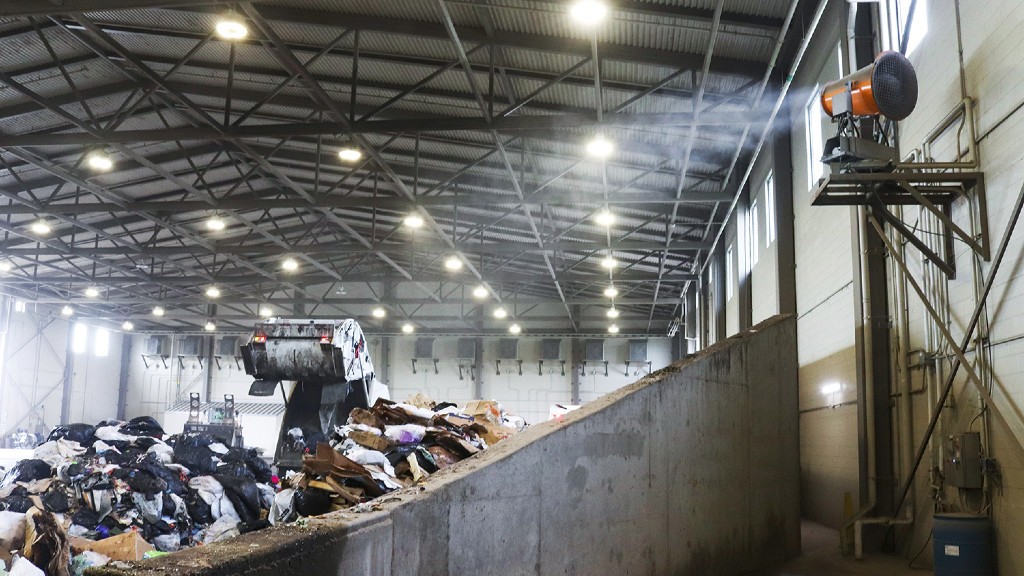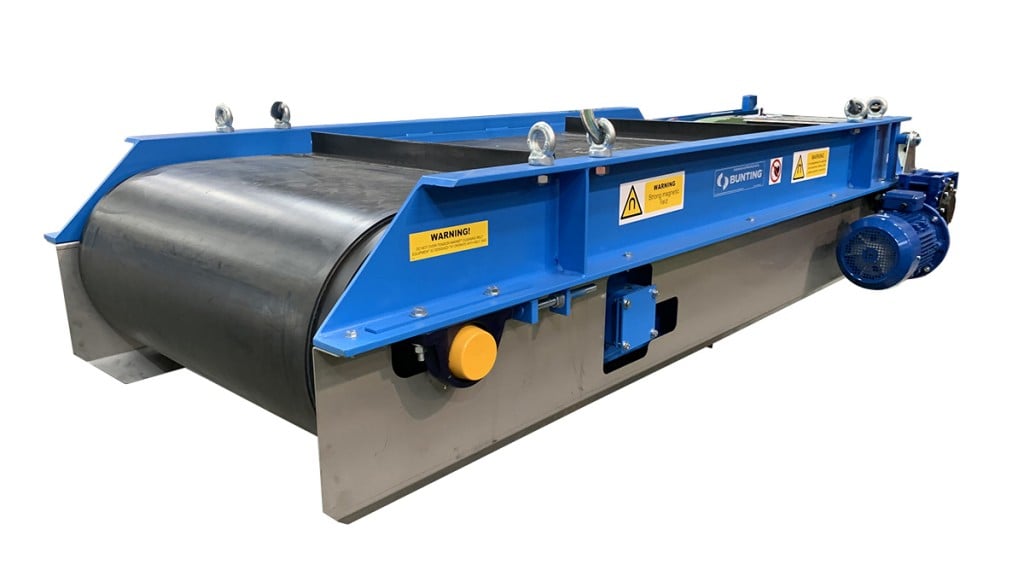
BossTek mist cannons have helped a Texas operator of several waste and recycling transfer terminals improve air quality to benefit workers, the public, and surrounding communities. The North Texas Municipal Water Department (NTMWD) initially installed two BossTek DustBoss DB-30 Injektor mist cannons in one of its terminals, where the units significantly reduced the amount of dust emissions during the offloading of C&D and MSW waste and recycling. Along with a dosing attachment for odour control, the operation was able to stay compliant with air quality regulations and create a more pleasant workplace. The result was better relations with the surrounding communities and the installation of mist cannons in the rest of the department's terminal portfolio.
"From now on, any new transfer station will have a DustBoss as part of the original design," said Mike Friesen the assistant deputy of solid waste for the district. "Safety is our number one priority, and this equipment provides a significant upgrade for us. The technology will be an integral part of our operations moving forward."
NTMWD serves 930,000 people by providing solid waste disposal services to five cities (Allen, Frisco, McKinney, Plano, and Richardson), as well as Collin County and the surrounding area. Solid waste is picked up from residents and businesses and delivered to one of three transfer stations (two in Plano and one in Richardson). NTMWD transfer stations are enclosed areas where dust and odour can be contained and mitigated. The three locations process up to 3,370 tons per day of both MSW and C&D waste.
Refuse is deposited onto the 33,000 square foot "tipping floor" where front-end wheel loaders push the piles toward a 15-foot wide, 60-foot-long opening in the floor. The material drops down into the loadout tunnel, where open-top transfer trailers collect the debris. Recycling is separated and piled for pickup.
A major dust emission point occurs during the initial waste drop-off. As garbage trucks back in and the hydraulic lifts push or dump the material onto the tipping floor, a thick cloud of dust can be created, filling a portion of the building. The sorting and pushing of material further disrupts the waste and can cause dust to become airborne when pushed by the front-end wheel loaders. As the waste material is dropped and loaded into trailers, the turbulence from the impact and the vertical airflow through the tunnel below forces the particulates back up through the shaft and into the building.
The first two DustBoss DB-30 Injektor units were mounted at the Lookout transfer station approximately 10 feet above the tipping floor to reach above the piles and cover more of the tipping floor area. The cannons are constructed with a stainless steel barrel and a three-phase, 7.5 HP fan generating 8,000 CFM (226.50 CMM). Water is fed through an in-line 30 mesh 595-micron filter system to remove impurities. The water is then mixed with a measured and consistent amount of odour neutralizer by a dosing pump before it reaches a misting ring with 30 nucleating nozzles. These specially designed nozzles fracture the pressurized water into millions of tiny droplets.
With a throw of 30 metres (100 feet), the unit's 0- to 50-degree vertical adjustment and 70-degree oscillation range increase the coverage area to 6,100 square feet (566 square metres). Operators use a touchscreen interface on the control box at the base of each elevated unit to set the volume of water, throw distance, vertical settings, and oscillation range. This offers control for the constantly changing operational conditions and traffic volumes.
"The dynamic of creating a mist of dosed atomized droplets made this a highly effective method of double-duty odour and dust control," Friesen pointed out. "When the machine is on, we can see the dust get pulled from the air and dragged to the ground before it reaches air intakes or exhaust vents."
The wall-mounted cannons are fed by a standard one-inch hose attached to a booster pump, fed by a city water source with limited pressure. Old methods of dust control such as hoses or sprinklers require attachment to hydrants which use approximately 500 to 1500 gpm (1893-5678 lpm) of water. The pressure delivered by the booster pump – rather than relying on high pressure from the hydrant – means the design uses only around 7 gpm (26 lpm). This greatly reduces the amount of pooling and standing water in the area.
Recently, the Solid Waste Association of North America (SWANA) gave its Safety Award for Biggest Safety Improvement to NTMWD's solid waste system. The organization cites several factors that played a role in the award, and Friesen says the DustBoss units were one of the main factors in producing a safer workplace.



